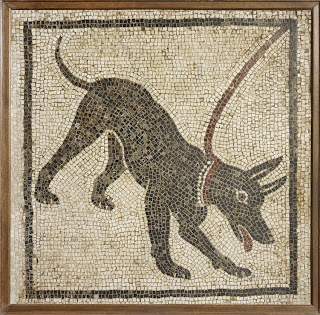I love watching how an archaeological story
appears, develops and mutates within the popular press (have I mentioned that
before?) and this week there was a real belter.
On Wednesday morning, all the UK London
"Archaeologists are calling it 'the Pompeii BBC reporter gushed
enthusiastically "after they've managed to find Roman artefacts dating
back nearly 2,000 years". "Over 10,000 objects have been discovered",
a CBS voiceover confirmed in a different report (not saying how such a number had been calculated and whether it included every single pot sherd), "the largest number ever
found on an excavation in London
Newspaper reports were, it transpired, substantially
working from the same press release, subtle variations on the theme appearing
in the Independent, Daily Mail, Telegraph, Times, Express and the Sun. "The
discoveries have been so well preserved in the muddy waters of the lost
Walbrook River that archaeologists have nicknamed the site 'the Pompeii of the
North'" confirmed the Mirror, the Express also noting that "Even
objects and structures made of wood and leather – which normally rarely stand
the test of time – have been discovered, leading archaeologists to dub the site
'the Pompeii of the north'."
Most commentators agreed that it wasn't just the
quality of preservation that was truly gob-smacking, but also the quantity, the
Express, Mail and Times confirming that "around 10,000
accessioned finds have been discovered by 60 archaeologists" (the Independent was a little less confident, observing that archaeologists had "so far
discovered 8,000 objects and expect that to rise to 10,000 by the time the
project is finished"). The Mail helpfully added some statistics of its own
in that "approximately 3,500 tonnes of soil have been excavated by hand,
which is around 21,000 barrows full".
The finds were, as far as anyone could tell, indeed quite spectacular, the anaerobic
soils of the Walbrook preserving a wide and diverse range of organic material not usually
encountered in urban deposits of the period.
So far so good (and is fantastic, as always, to
see archaeology in the news), but one cannot help but feel that, were it not
for the successful hijacking of the name ‘Pompeii’ (a popular name at the
moment given all the attention given to the British Museum’s new exhibition on
the cities of Vesuvius), this particular story would sadly have not got the
attention that it did.
One thing that no one could seem to clarify was precisely who had first coined the attention grabbing headline 'Pompeii
·
Wooden buildings that survive to shoulder height
·
A rare inked writing tablet revealing an affectionate letter
·
A totally unparalleled and mysterious leather object depicting a
gladiator fighting mythical creatures
·
A complete and exceptionally beautiful amber Gladiator amulet
·
The largest assemblage of fist and phallus good luck charms from one
site (not mentioned, I must add, in the Newsround report)
·
A previously unexcavated section of the Temple Mithras
·
Rubbish and ritual deposits from the Walbrook river, including Roman
coins
·
A Roman well into which a pewter hoard, coins and cow skulls were thrown
as part of a ritual
·
Complex Roman drainage systems used to discharge waste from industrial
buildings
All archaeological sites are important but
sometimes it's difficult to successfully convey that importance to the press;
sometimes you need a catchphrase - an emotive tag-line that
immediately grabs a journalist by the throat and forces them to pay attention. 'Pompeii
Of course, once you sit down and think about it,
this particular buzz-phrase doesn't bear close scrutiny (as several non-archaeologists have already pointed out to me). Yes, London
The defining factor in the preservation of the London Pompeii, t Walbrook River London London Pompeii
well-crafted mosaics
or pieces of marble statuary depicting satyrs investigating the nether regions of willing goats
from the 'Pompeii'
of London.
Other than that, both sites are exactly not quite dissimilar.
Other than that, both sites are exactly not quite dissimilar.









No comments:
Post a Comment